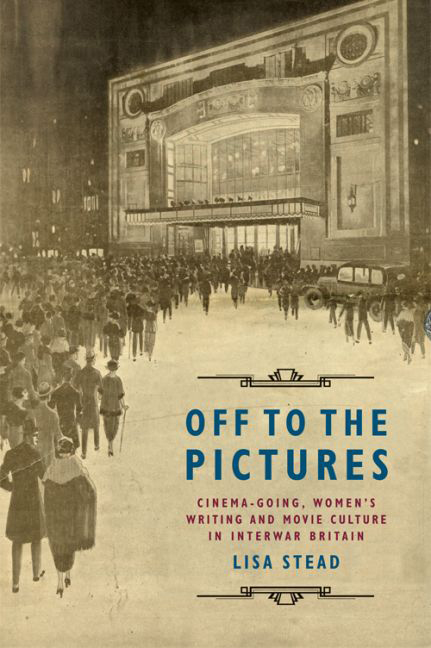Book contents
- Frontmatter
- Contents
- List of Figures
- Acknowledgements
- Dedication
- Introduction
- 1 Off to the Pictures: Cinema, Fiction and Interwar Culture
- 2 Screen Fantasies: Tie-ins and the Short Story
- 3 Middlebrow Modernity: Class, Cinema-going and Selfhood
- 4 Wander, Watch, Repeat: Jean Rhys and Cinema
- 5 Film Talk: C. A. Lejeune and the Female Film Critic
- 6 Elinor Glyn: Intermedial Romance and Authorial Stardom
- Afterword
- Bibliography
- Index
1 - Off to the Pictures: Cinema, Fiction and Interwar Culture
Published online by Cambridge University Press: 15 September 2017
- Frontmatter
- Contents
- List of Figures
- Acknowledgements
- Dedication
- Introduction
- 1 Off to the Pictures: Cinema, Fiction and Interwar Culture
- 2 Screen Fantasies: Tie-ins and the Short Story
- 3 Middlebrow Modernity: Class, Cinema-going and Selfhood
- 4 Wander, Watch, Repeat: Jean Rhys and Cinema
- 5 Film Talk: C. A. Lejeune and the Female Film Critic
- 6 Elinor Glyn: Intermedial Romance and Authorial Stardom
- Afterword
- Bibliography
- Index
Summary
[T]he vast majority of picturegoers are women, and always will be … the one important, the one absolutely vital thing about the movies is that they should please the women.
E. EllandCinema sold fantasies and stories, but it also became the subject of fantasy and story, created by women for women, in ways that frequently centralised the specific textures of British everyday gendered experience. Fictional texts about women and film illuminate the social history of cinema as a cultural institution, one that increasingly intervened within and gave shape to women's lives. Issues such as class, age, marriage, geographical location and profession affect these contexts of reception, and women writers used fictional and journalistic modes to explore these intersections. By focusing on social and cultural histories of cinemas, this study thus contributes to the wider ‘historical turn’ of film studies instigated in the late 1990s and into the 2000s. This chapter outlines the critical and contextual foundations for the case study chapters that follow, in order to establish in greater depth the three interlocking contexts of movie-going, print culture and modernity in interwar Britain.
Women were an increasingly public presence between the wars, making cultural and economic contributions in the labour market in their expanding contribution to the nation's workforce. Women shouldered concerns about the blurring of gendered divides and feminising properties of mass culture in their use of public space, and as the dominant consumers of new mass leisure forms. ‘Going to the pictures’ became a more gender-specific activity within these contexts. The interwar era was a period in which cinema established a permanent, prominent place in British culture: a time in which, as Iris Barry put it in 1926, one could ‘walk into a picture-palace as easily as into your own kitchen’ (1972 [1926]: 3). Edythe Elland, quoted above writing for The Picturegoer in 1926, stressed the centrality of women to cinema culture at this time. Women emerged as a majority audience and primary consumer in the eyes of film trade and exhibitors. The film industry targeted women as an increasingly mobile public presence with greater disposable income to spend on leisure.
- Type
- Chapter
- Information
- Off to the PicturesCinemagoing, Women's Writing and Movie Culture in Interwar Britain, pp. 8 - 31Publisher: Edinburgh University PressPrint publication year: 2016



